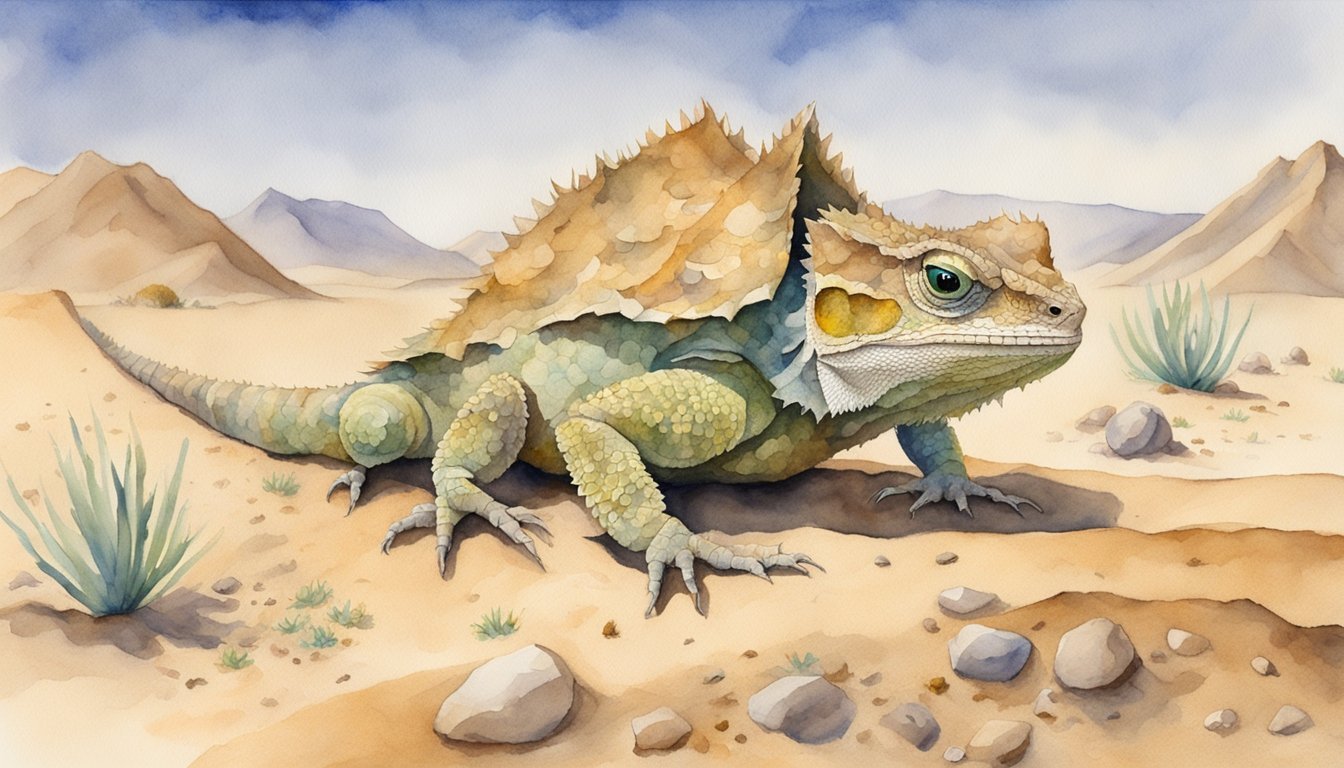Characteristics and Species
Horned lizards are a group of reptiles known for their distinct physical traits and wide array of behaviors. These lizards have developed unique adaptations, contributing to the diversity of the group over time.
Physical Description and Adaptation
Horned lizards, members of the genus Phrynosoma, are most notable for the crowns of horns on their heads, which are actually elongated scales. These reptiles exhibit a flattened, toad-like body shape, aiding in their camouflage in arid environments. Their skin color can range from various shades of tan to brown, enabling them to blend seamlessly with their surroundings. Certain species also have the ability to inflate their bodies to ward off predators.
Diversity and Evolution
There are about 21 recognized species of horned lizards, all part of the family Phrynosomatidae, which have evolved to inhabit diverse landscapes across the Americas. These species represent a broad spectrum of evolutionary adaptations that have allowed them to thrive in various environments. The Texas horned lizard, for instance, is widespread and known for its large size among the species.
Distinctive Behaviors
Horned lizards display an array of behaviors that have fascinated scientists. One of the most unusual defenses they possess is blood-squirting from the corners of their eyes, a tactic used to deter predators. Moreover, horned lizards often remain motionless to avoid detection, relying on their camouflage. They are known to bask in the sun to regulate their body temperature and to hibernate during colder months.
Their remarkable ways of adapting, diversifying, and evolving make the study of horned lizards especially significant in understanding reptilian life and the wider ecological systems they inhabit.
Habitat, Diet, and Conservation
The horned lizard, often referred to as the “horny toad,” is a captivating reptile with a distinctive physique and adaptive behaviors that safeguard its survival within its environment. This section uncovers the specifics of where they live, what they feed on, and the current efforts to conserve these unique creatures.

Natural Habitat and Geographic Distribution
Horned lizards are native to North America, with a range that spreads across the arid and semi-arid regions of the southwestern United States, including Texas, Arizona, New Mexico, Oklahoma, Kansas, and Wyoming. Texas horned lizards are particularly notable, inhabiting various environments from sandy soils to grasslands. They thrive in areas where their primary food source, harvester ants, is abundant. These reptiles have adapted to blend seamlessly into their desert surroundings, a trait that has served them well in the wild.
Feeding Habits and Prey
The diet of horned lizards is quite specialized, with a particular preference for harvester ants, which make up a significant portion of their intake. They are also known to eat other small insects such as spiders. Their hunting strategy is one of patience; horned lizards often wait motionless for prey to approach before capturing it with a quick flick of their sticky tongues.
Threats and Conservation Efforts
Despite their remarkable adaptations, horned lizards face many threats that have led to a decline in their populations. They are listed as a threatened species in some areas, with factors such as habitat destruction, invasive species, and the pet trade posing significant risks. Additionally, the use of pesticides reduces the availability of their primary food source, harvester ants. Conservation efforts are underway, such as habitat protection and protective legislation. Organizations like the Horned Lizard Conservation Society are dedicated to preserving these unique reptiles by fostering greater awareness and encouraging the implementation of conservation measures.

